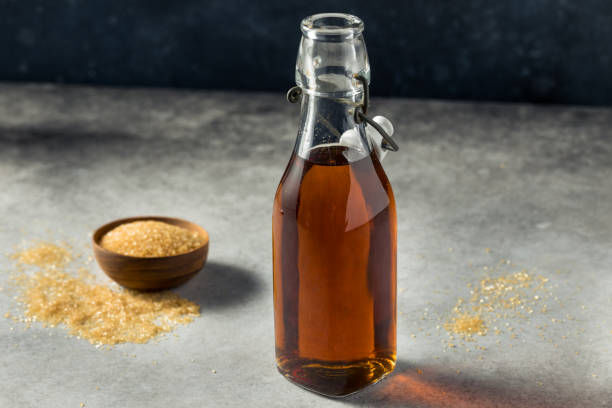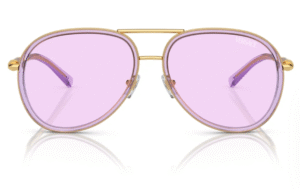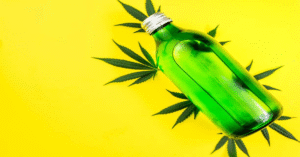In recent years, the demand for sugar free products has skyrocketed due to growing awareness of health, weight management, and the impact of sugar on conditions like diabetes and obesity. Among these innovations, sugar free syrup has become a staple for those who love sweetness but want to avoid the negative consequences of sugar consumption. From breakfast pancakes to coffee, desserts, and cocktails, sugar free syrup offers a versatile, flavorful, and health-conscious alternative.
This article explores everything about sugar free syrup in a comprehensive manner — including what it is, how it’s made, the types of sweeteners used, health benefits, possible drawbacks, and how to use it effectively in your daily diet. We’ll also analyze its nutritional profile, differences from regular syrup, and provide helpful guidance for consumers seeking to make informed choices.
1. Understanding Sugar Free Syrup
Sugar free syrup is a sweet, viscous liquid formulated without traditional sugar (sucrose). Instead, it derives its sweetness from low-calorie or zero-calorie sweeteners, which mimic the taste of sugar without contributing to high caloric intake or spiking blood glucose levels.
Traditional syrups like maple or honey are naturally high in sugar, making them unsuitable for individuals managing diabetes or following low-carb diets. Sugar free syrups, on the other hand, maintain the sweet taste and syrup-like texture but rely on alternative ingredients that provide similar sensory experiences with significantly fewer calories.
These syrups are not only used for breakfast foods but also in coffee, tea, desserts, smoothies, and even savory dishes. Today, the market offers a wide range of flavors such as maple, chocolate, vanilla, caramel, strawberry, and hazelnut, catering to both home cooks and professional chefs.
2. Composition and Main Ingredients
Sugar free syrup typically consists of sweeteners, water, thickeners, flavorings, and sometimes preservatives or coloring agents. While recipes differ among brands, the basic components remain consistent.
| Component | Function | Examples |
|---|---|---|
| Sweeteners | Provide sweetness without sugar | Stevia, Sucralose, Erythritol, Monk Fruit, Aspartame |
| Water | Base for the syrup | Purified or filtered water |
| Thickeners | Add viscosity and texture | Xanthan gum, Cellulose gum, Guar gum |
| Flavorings | Give characteristic taste | Natural or artificial flavor extracts |
| Preservatives | Extend shelf life | Potassium sorbate, Sodium benzoate |
| Coloring agents | Improve appearance | Caramel color, natural fruit pigments |
The choice of sweetener greatly affects both taste and health profile, which makes understanding the sweeteners themselves essential.
3. Types of Sweeteners Used in Sugar Free Syrup
Different sugar free syrups employ distinct sweetening agents based on taste preference, intended use, and target audience. Here are the most common ones:
a. Stevia
Derived from the Stevia rebaudiana plant, Stevia is a natural zero-calorie sweetener. It is 200–300 times sweeter than sugar and does not raise blood sugar levels, making it ideal for diabetics. However, excessive use can impart a slight bitter aftertaste.
b. Sucralose
A synthetic sweetener created by modifying sugar molecules, Sucralose is non-caloric and heat-stable, which means it can be used in cooking and baking. It’s found in many commercial syrups and beverages.
c. Erythritol
A sugar alcohol that occurs naturally in fruits, Erythritol offers about 70% of the sweetness of sugar but with minimal calories. It also does not cause tooth decay and has little impact on blood glucose.
d. Monk Fruit Extract
Made from the Siraitia grosvenorii fruit, monk fruit sweetener contains compounds called mogrosides, which provide intense sweetness without calories. It has a pleasant, clean taste and is favored for natural formulations.
e. Aspartame
Commonly used in diet sodas and syrups, aspartame provides sweetness similar to sugar but with significantly fewer calories. However, it’s not suitable for individuals with phenylketonuria (PKU), a rare metabolic disorder.
4. Nutritional Comparison: Sugar Free vs. Regular Syrup
| Nutrient (per tablespoon) | Regular Maple Syrup | Sugar Free Syrup |
|---|---|---|
| Calories | 50–60 kcal | 5–10 kcal |
| Sugar | 12–14 g | 0–1 g |
| Carbohydrates | 13 g | 1–2 g |
| Fat | 0 g | 0 g |
| Protein | 0 g | 0 g |
| Glycemic Index | High (65+) | Very Low (0–5) |
From the table, it is clear that sugar free syrup provides the same sweet satisfaction but drastically reduces calorie and carbohydrate intake. This makes it a powerful alternative for people managing weight loss, diabetes, and low-carb diets.
5. Health Benefits of Sugar Free Syrup
a. Helps Control Blood Sugar
One of the most significant benefits of sugar free syrup is its minimal impact on blood glucose levels. Since it contains non-nutritive sweeteners, it prevents sudden sugar spikes, making it suitable for diabetics and those practicing blood sugar control.
b. Aids in Weight Management
Sugar contributes heavily to calorie intake. Replacing regular syrup with a sugar free variant helps reduce overall caloric consumption, which is beneficial for maintaining or achieving a healthy weight.
c. Supports Dental Health
Sugar free syrup does not feed harmful oral bacteria that cause cavities or tooth decay. Sweeteners like xylitol and erythritol even inhibit bacterial growth, promoting better oral hygiene.
d. Compatible with Low-Carb Diets
Individuals following keto or low-carb diets can safely consume sugar free syrups since they have minimal net carbs and do not interfere with ketosis.
e. Reduced Risk of Metabolic Disorders
High sugar consumption is linked to insulin resistance, fatty liver, and metabolic syndrome. Using sugar free alternatives can help lower these risks over the long term.
6. Potential Drawbacks and Considerations
While sugar free syrups offer many benefits, they are not entirely without limitations.
- Digestive Sensitivity: Sugar alcohols like erythritol or sorbitol can cause bloating or mild gastrointestinal discomfort when consumed in excess.
- Artificial Aftertaste: Some people find synthetic sweeteners like sucralose or aspartame leave a chemical or metallic aftertaste.
- Additive Content: Certain commercial syrups may contain preservatives and artificial colors that sensitive individuals may wish to avoid.
- Moderation Needed: Though sugar free, consuming large amounts of any sweetener can still influence taste perception and cravings for sweetness.
As with any processed food, moderation and balance are key to long-term health.
7. Types and Flavors of Sugar Free Syrup
Sugar free syrups come in an extensive range of flavors, enabling culinary creativity. Some of the most popular categories include:
| Flavor Type | Common Uses |
|---|---|
| Maple | Pancakes, waffles, oatmeal |
| Chocolate | Desserts, coffee, milkshakes |
| Vanilla | Lattes, baked goods |
| Caramel | Ice cream, frappes, cocktails |
| Fruit-based (strawberry, blueberry) | Yogurt, smoothies, desserts |
| Hazelnut | Coffee and chocolate drinks |
Each variant uses different natural or artificial flavorings to replicate the taste of traditional syrups, making them versatile across cuisines.
8. How Sugar Free Syrup Is Made
The process of making sugar free syrup involves several key stages designed to achieve perfect taste, consistency, and shelf life:
- Base Preparation: Water and thickeners are mixed to create the syrup’s foundation.
- Sweetener Addition: Selected sweeteners are dissolved in the base, ensuring even distribution.
- Flavor Integration: Natural or synthetic flavor extracts are blended in to produce the desired taste.
- Heating and Homogenization: The mixture is heated slightly and homogenized to ensure smooth texture.
- Cooling and Bottling: Once cooled, preservatives and stabilizers are added before bottling.
Manufacturers perform strict quality control to maintain consistency in sweetness, viscosity, and flavor profile.
9. Home Preparation of Sugar Free Syrup
Making sugar free syrup at home is simple and allows complete control over ingredients.
Ingredients:
- 1 cup water
- 1 cup erythritol (or chosen sweetener)
- ½ teaspoon xanthan gum (for thickness)
- 1 teaspoon natural flavor extract (e.g., maple or vanilla)
Steps:
- Heat water in a saucepan.
- Add erythritol and stir until dissolved.
- Sprinkle xanthan gum slowly while whisking to prevent lumps.
- Add flavor extract and simmer for 3–5 minutes.
- Cool before storing in a sealed glass container.
This homemade syrup stays fresh for up to 2 weeks when refrigerated.
10. Uses of Sugar Free Syrup in Daily Life
Sugar free syrup isn’t limited to pancakes. It’s widely used in a variety of culinary and beverage applications:
- Beverages: Adds flavor to coffee, tea, and smoothies without excess calories.
- Desserts: Used as toppings for ice cream, yogurt, and puddings.
- Baking: Incorporated into recipes for cakes, muffins, or cookies as a sweetening agent.
- Savory Dishes: A touch of syrup can enhance glaze for meats like ham or chicken.
- Health Shakes: Ideal for protein shakes and post-workout drinks that require sweetness without sugar.
Its adaptability across hot and cold foods makes it a kitchen essential for health-conscious individuals.
11. Sugar Free Syrup for Diabetics
For people with diabetes, managing blood sugar is a daily challenge. Sugar free syrup offers a safer alternative to traditional sweeteners.
Because it contains non-glycemic sweeteners, it does not significantly impact insulin response. However, not all sugar free syrups are created equal — those containing maltitol or sorbitol can still affect blood sugar slightly. Therefore, diabetic consumers should choose syrups labeled “zero glycemic impact” or those made with stevia or monk fruit.
Regular blood glucose monitoring is recommended when introducing any new sweetened product.
12. Sugar Free Syrup and Weight Management
Replacing high-calorie sugary syrups with sugar free versions is an effective strategy for calorie reduction. Since one tablespoon of regular syrup can contain up to 60 calories, substituting it with a 5-calorie sugar free syrup can save hundreds of calories per week.
This substitution supports:
- Caloric deficit for weight loss
- Reduced sugar cravings over time
- Better adherence to diet plans such as keto or intermittent fasting
In addition, sugar free syrups help individuals maintain their psychological satisfaction of sweetness while achieving fitness goals.
13. Environmental and Economic Perspective
Producing sugar substitutes often requires fewer agricultural resources than sugar cane or beet cultivation. This can reduce environmental stress related to deforestation, water use, and pesticide exposure. Additionally, since most sugar free syrups are highly concentrated, smaller amounts achieve desired sweetness, leading to less packaging waste and longer shelf life.
From an economic standpoint, sugar free syrups tend to be slightly more expensive per bottle, but their durability and low usage per serving often balance the cost over time.
14. Safety and Regulatory Standards
Sugar free syrups are regulated by food safety authorities such as the U.S. Food and Drug Administration (FDA) and the European Food Safety Authority (EFSA). Each approved sweetener undergoes rigorous testing to establish an Acceptable Daily Intake (ADI) level.
| Sweetener | ADI (mg/kg body weight/day) | Authority Approval |
|---|---|---|
| Sucralose | 5 | FDA, EFSA |
| Aspartame | 40 | EFSA |
| Stevia (Steviol glycosides) | 4 | FDA, WHO |
| Monk Fruit | Not established (safe) | FDA (GRAS) |
| Erythritol | No ADI needed | FDA (GRAS) |
Consumers should always check ingredient labels to ensure compliance with their dietary needs and health status.
15. Market Trends and Future of Sugar Free Syrups
The global demand for sugar free products continues to expand as consumers prioritize health and natural ingredients. Key trends include:
- Natural Sweeteners Growth: Increasing preference for stevia and monk fruit over artificial options.
- Functional Syrups: Infusions with added nutrients like vitamins, minerals, or probiotics.
- Eco-friendly Packaging: Movement toward biodegradable or recyclable containers.
- Culinary Innovation: Expanding use in gourmet cooking and specialized diets.
Future formulations will likely focus on cleaner labels, improved taste profiles, and more sustainable production methods.
16. Conclusion
Sugar free syrup stands as a remarkable innovation that aligns with modern nutritional awareness and lifestyle goals. It bridges the gap between indulgence and health by providing the sweetness we crave without the metabolic burden of sugar. Whether used for diabetic management, weight control, or simply reducing calorie intake, sugar free syrup offers a versatile and satisfying alternative for all age groups.
Understanding its ingredients, benefits, and potential sensitivities allows consumers to make informed choices that support long-term wellness. As the global food landscape continues to evolve toward healthier alternatives, sugar free syrup represents both a culinary solution and a health-conscious revolution — proof that taste and nutrition can indeed coexist harmoniously.
Frequently Asked Questions (FAQs)
1. Is sugar free syrup safe for diabetics?
Yes. Most sugar free syrups made with stevia, monk fruit, or sucralose are safe for diabetics because they do not significantly affect blood glucose levels.
2. Does sugar free syrup taste the same as regular syrup?
While taste varies among brands and sweeteners, high-quality sugar free syrups closely replicate the sweetness and texture of traditional syrups with minimal aftertaste.
3. Can sugar free syrup be used in cooking and baking?
Yes, especially varieties made with heat-stable sweeteners like sucralose, erythritol, or stevia. They perform well in recipes without losing sweetness.
4. Are there any side effects of sugar free syrup?
Excessive intake of sugar alcohols may cause bloating or gas. Most people can consume moderate amounts without discomfort.
5. How should sugar free syrup be stored?
Store it in a cool, dry place away from direct sunlight. Once opened, refrigerate and consume within a few weeks for best flavor and freshness.









